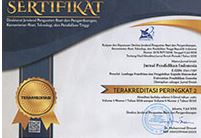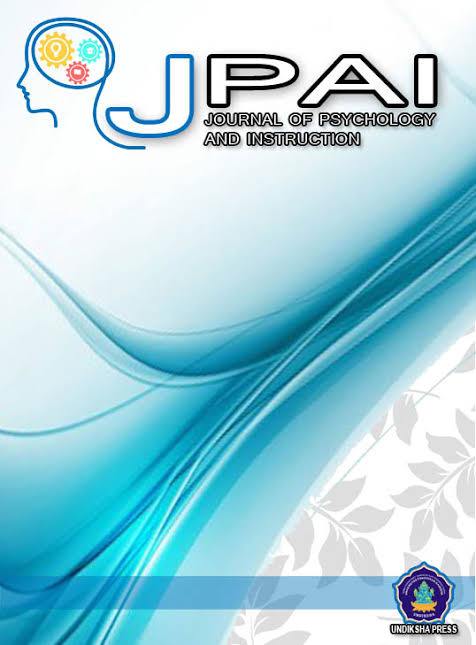The Psychological Conditions of Mother and Child Survivors on West Lombok Post-Earthquake
DOI:
https://doi.org/10.23887/jpai.v3i3.23189Abstract
Earthquake survivors have physical and psychological effects. Survivors of the earthquake in Lombok in July 2018 then still caused a considerable psychological impact, one of which was post-earthquake trauma or PTS. Since the post-earthquake, earthquake survivors have tried to live their lives, but of course earthquake survivors have not completely overcome the psychological problems experienced after the earthquake. Post-earthquake psychological conditions require psychosocial treatment to be resolved, an indication of high anxiety, stress or depression will result in a more acute psychological condition. Screening is needed related to the description of the psychological condition of mothers and children of earthquake survivors in order to find out the problems that occur in the field and can be preliminary data to find solutions related to the psychological problems of earthquake survivors. This study uses quantitative methods by selecting respondents as mothers and children under the age of 9 years as survivors of the 2018 Lombok earthquake. The initial screening used 163 mothers who were given with DASS (Depression, Anxiety and Stress Scale) and 163 children given the Screening for Scale Child Anxiety Related Disorder (SCARED). The results from the statistical analysis further reveal was found that the psychological condition that still appeared was anxiety, 53 mothers were at the level of severe and very severe anxiety while the child felt anxious separation from the mother by 109 and as many as 54 remaining were still experiencing general anxiety due to the earthquake.References
American Psychiatric Association. (2013). Diagnostic and statistical manual of mental disorders (5th ed.). Washington, DC: Author. DOI: https://doi.org/10.1176/appi.books.9780890425596
BMKG. (2018). Ada 447 Gempa susulan terjadi di Lombok hingga pagi ini. Available at http://www.regional.kompas.com/read/2018/08/10/07150051/ada-447- gempa-susulan-terjadi-di-lombok-hingga-pagi-ini.
BMKG. (2018). Ulasan Guncangan Gempa Lombok Juli-Agustus. Available at www.bmkg.go.id
Brewin CR, Andrews B, Valentine JD. (2000). Meta-analysis of risk factors for posttraumatic stress disorder in trauma-exposed adults. Journal of Consulting and Clinical Psychology, 68, p. 748-66. DOI: https://doi.org/10.1037/0022-006X.68.5.748
Birmaher, B., Brent, D. A., Chiappetta, L., Bridge, J., Monga, S., & Baugher, M. (1999). Psychometric properties of the Screen for Child Anxiety Related Emotional Disorders (SCARED): A replication study. Journal of the American Academy of Child and Adolescent Psychiatry, 38(10), 1230–6. DOI: https://doi.org/10.1097/00004583-199910000-00011
Damanik, E.D. (2014). Pengujian reliabilitas, validitas, analisis item dan pembuatan norma Depression Anxiety Stress Scale (DASS): Berdasarkan penelitian pada kelompok sampel Yogyakarta dan Bantul yang mengalami gempa bumi dan kelompok sampel Jakarta dan sekitarnya yang tidak mengalami gempa bumi. Tesis. Depok: Universitas Indonesia.
Dwidiyanti, M., Wijayanti, D. Y., Sari, S. P. & Sarjana, A. S. W. (2017). Modul smart sharing. Semarang: UNDIP Press Farooqui M. et al. Posttraumatic stress disorder: a serious post-earthquake complication. Trends Psychiatry and Psychotherapy, 39(2). https://doi.org/10.1590/2237-6089-2016-0029 .
Farooqui M. et al. Posttraumatic stress disorder: a serious pos-earthquake complication.Trends Psychiatry Psychoter. 2017.Vol 39 No 2 Doi: 10.1590/2237-6089-2016-0029. DOI: https://doi.org/10.1590/2237-6089-2016-0029
Hoffman, S.G., Sawyer, A.T., Witt, A.A., & Oh, D. (2010). The effect of mindfulness-based therapy on anxiety and depression: A meta-analytic review. Journal of Consulting and Clinical Psychology, 78(2), 169. DOI: https://doi.org/10.1037/a0018555
Naeem, F., Ayub, M., Masood, K., Gul, H., Khalid, M., Farrukh, A., … Rasheed, H. (2011). Prevalence and psychosocial risk factors of PTSD : 18 months after Kashmir earthquake in Pakistan. Journal of Affective Disorders, 130(1–2), 268– 274. https://doi.org/10.1016/j.jad.2010.10.035. DOI: https://doi.org/10.1016/j.jad.2010.10.035
Richman K (2012) Religion at the epicenter agency and affiliation in Léogâne after the earthquake. Studies in Religion/Sciences Religieuses, 41. p. 148–165. DOI: https://doi.org/10.1177/0008429812441314
Ramirez M, Peek-Asa C. Epidemiology of traumatic injuries from earthquakes. 2005. (online) Available at http://epirev.oxfordjournals.org/content/27/1/47.extract DOI: https://doi.org/10.1093/epirev/mxi005










